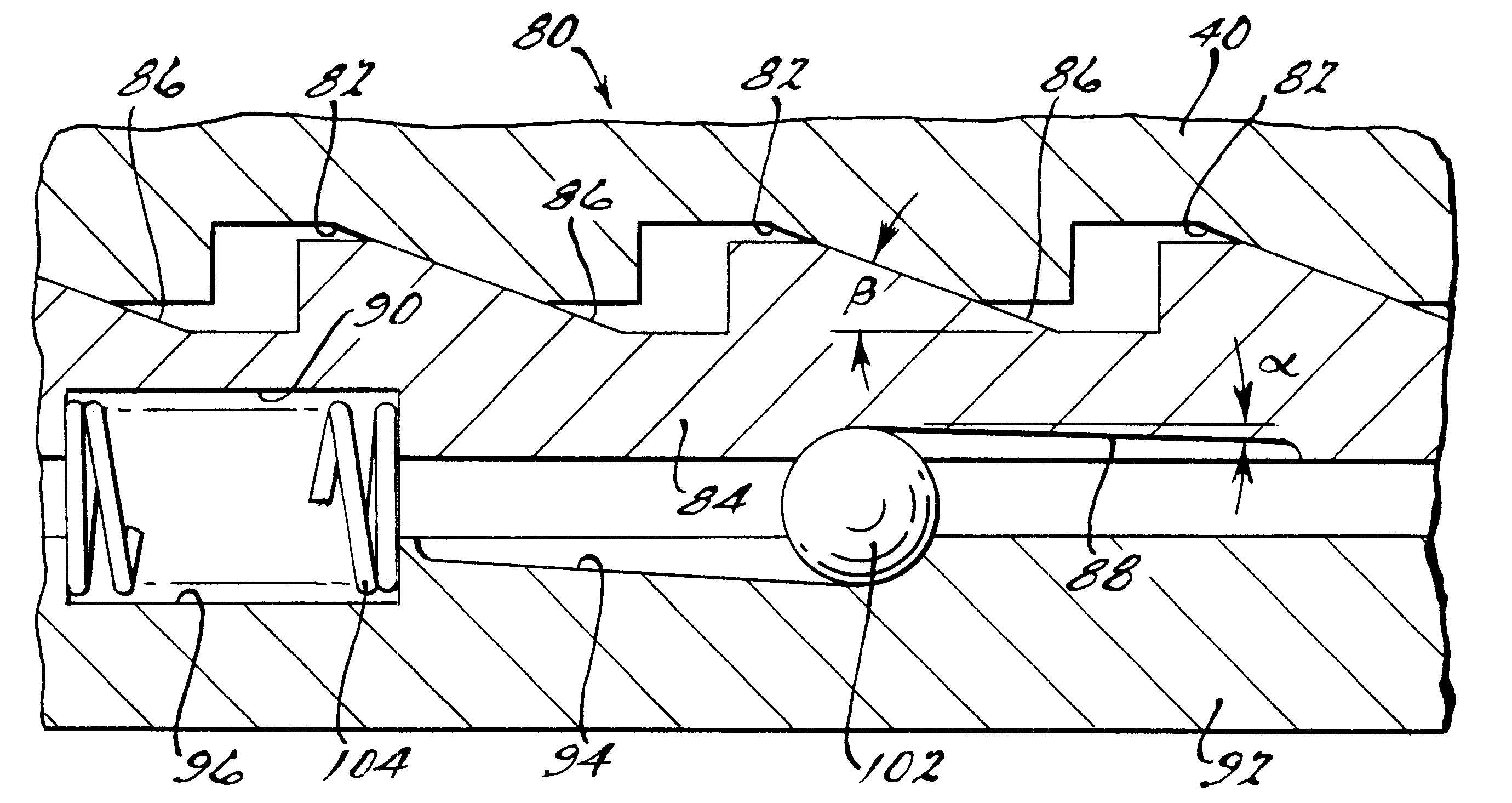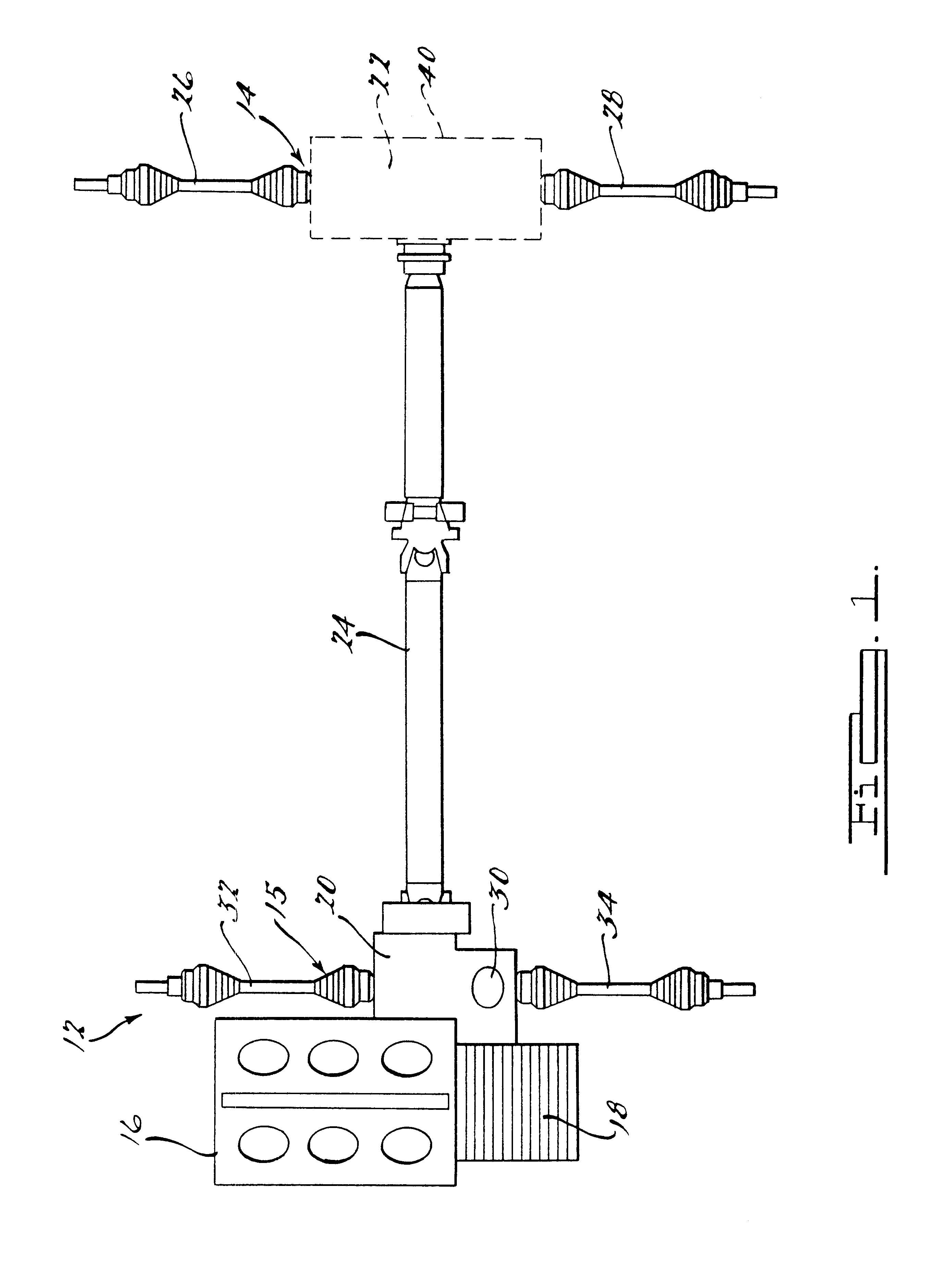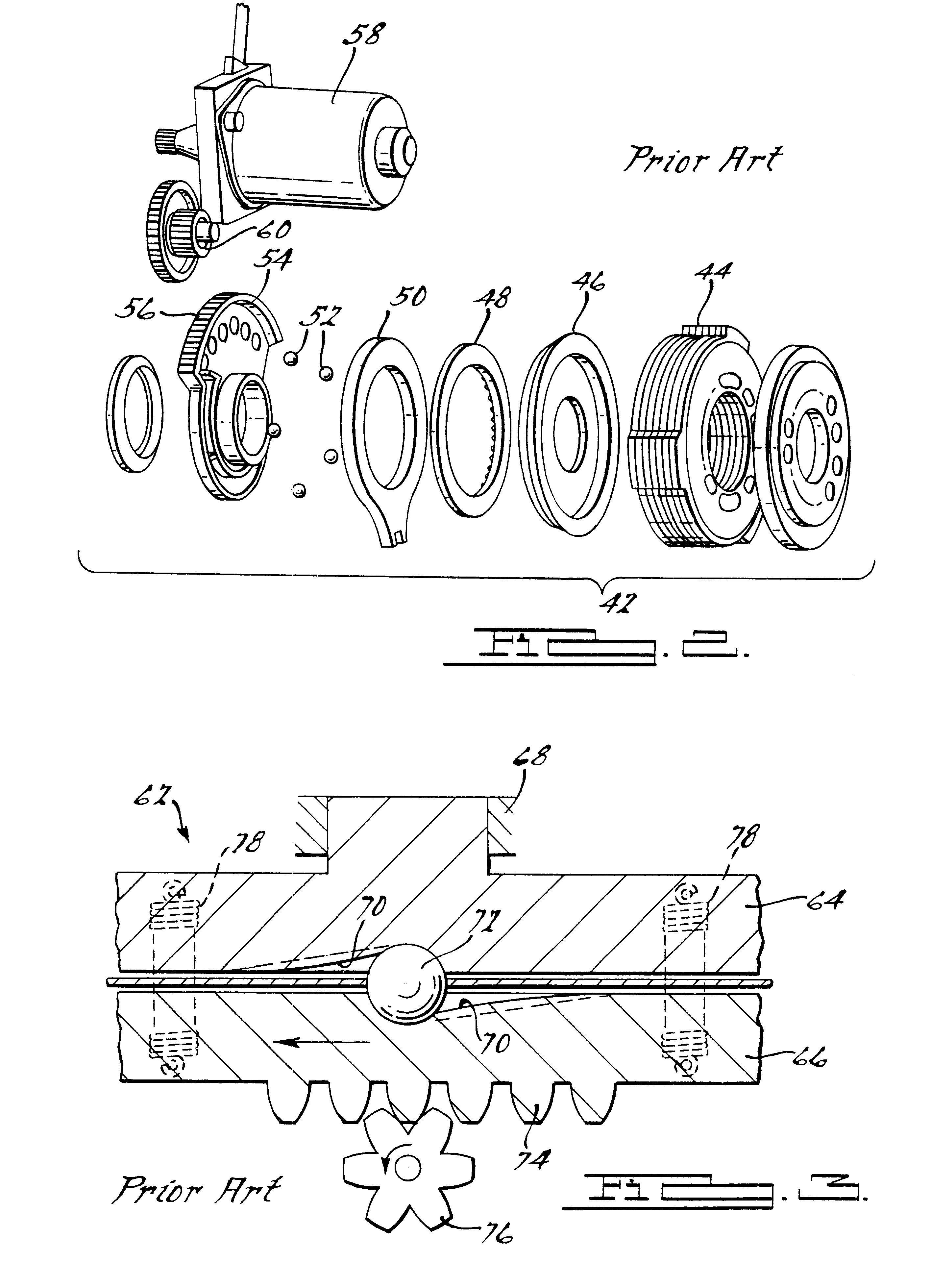Engagement mechanism with two stage ramp angle
a technology of a two-stage, ramp angle, applied in mechanical actuated clutches, transportation and packaging, gearing, etc., can solve the problems of compromising design, steep ramp angle, and prior art ball ramp mechanisms
- Summary
- Abstract
- Description
- Claims
- Application Information
AI Technical Summary
Benefits of technology
Problems solved by technology
Method used
Image
Examples
Embodiment Construction
)
Referring to the drawings, a double stage ramp mechanism 80 for use in an electro mechanical engagement system for a friction clutch is shown. The double stage ramp mechanism 80 can be used in either a front axle or rear axle of an automotive vehicle. It may be used in any type of drivetrain system such as an all wheel drive, a front wheel drive, or a rear wheel drive.
FIG. 1 schematically illustrates an all wheel drive or four wheel drive motor vehicle 12 that is primarily front wheel driven, however the present invention can also be used on a primary rear wheel driven vehicle. A motor vehicle 12 as shown in FIG. 1 is permanently driven by a front axle 15. The motor vehicle 12 is driven by power transferred from the engine 16 through a transaxle or gear box 18 which may be either an automatic or manual gear box. The power from the gear box 18 enters the power take off 20 of the drivetrain assembly and finally on through to the front differential 30. When there is a demand for power...
PUM
 Login to View More
Login to View More Abstract
Description
Claims
Application Information
 Login to View More
Login to View More - R&D
- Intellectual Property
- Life Sciences
- Materials
- Tech Scout
- Unparalleled Data Quality
- Higher Quality Content
- 60% Fewer Hallucinations
Browse by: Latest US Patents, China's latest patents, Technical Efficacy Thesaurus, Application Domain, Technology Topic, Popular Technical Reports.
© 2025 PatSnap. All rights reserved.Legal|Privacy policy|Modern Slavery Act Transparency Statement|Sitemap|About US| Contact US: help@patsnap.com



